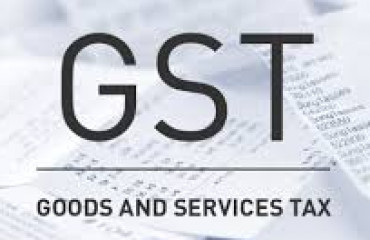
Monthly generation of e-way bills or electronic permits required for shipment of goods within and across states has shot up to an all time high in December, suggesting that Goods and Services Tax (GST) collection in January is likely to be robust
Monthly generation of e-way bills or electronic permits required for shipment of goods within and across states has shot up to an all time high in December, suggesting that Goods and Services Tax (GST) collection in January is likely to be robust
Monthly generation of e-way bills or electronic permits required for shipment of goods within and across states has shot up to an all time high in December, suggesting that Goods and Services Tax (GST) collection in January is likely to be robust.
Data available from GSTN, the company that processes GST returns showed that monthly e-way bills generated have shot up to 8.41 crore in December, surpassing the 8.4 crore permits raised in September. October GST revenue collection, which reflects transactions in September, was the second highest at ₹1.52 trillion. E-way bills are taken by analysts as a high frequency indicator of economic activity.
High goods shipment activities in December point to revenue collections remaining strong in January, a development that is likely to please policy makers preparing to end the current financial year without fiscal deficit as a share of GDP not exceeding the projected level of 6.4%.
E-way bill generation had moderated in October from the level seen in September, a trend that experts attributed to higher number of holidays in October, before further picking up momentum in November and December as consumption remained strong while the country emerged out of the pandemic. Many experts had pointed out an element of pent-up demand of two years that supported consumption in the festive season.
GST collections have remained buoyant so far this year on the back of economic recovery and the steps taken to improve tax compliance. Central and state GST authorities have gradually tightened the reporting requirements that increased the government's oversight of economic activities, which also aided in improved compliance.
Another high frequency indicator relating to goods, purchase managers index (PMI), too pointed to strong performance of the manufacturing sector in December. The S&P Global PMI data based on a survey of 400 companies had shown that business conditions improved for Indian manufacturers in December to the greatest extent in over two years. At 57.8 in December, up from 55.7 in November, PMI pointed to a robust improvement in the health of the sector that was the best seen since October 2020, S&P had said on 2 January.
However, another high frequency indicator, retail sale of automobiles, in December fell by 5% year-on-year to 1.62 million units, driven by a decline in two wheeler sales, after two months of adrenalin rush—48% year-on-year growth in October and 26% growth in November, according to dealers' body, Federation Of Automobile Dealers Associations (FADA).
After a strong start to the year with a 13.5% and 6.3% economic expansion in the June and September quarters, GDP growth is expected to normalise in the second half of the fiscal, going by the 7% full year growth rate projected by the National Statistics Office. (ends)
